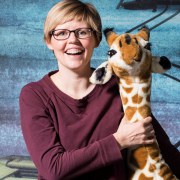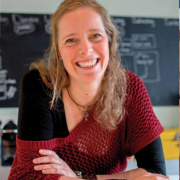Designing for learning in a tinkering environment
This session will address the thorny question of how to juggle the multiple demands placed on tinkering spaces. For instance, how can we create rewarding experiences for visitors but also high-performance, durable and easy-to-operate spaces? How can these spaces serve a range of audiences and purposes: schools, families, summer camps, team building and more? What kinds of physical spaces best support the Learning Dimensions of Making and Tinkering, a framework developed by the Exploratorium team?
We will set the stage for these discussions by introducing how you can use these Learning Dimensions for professional reflection on the design of environments, activities, and facilitation. We will then present examples from different places, looking for inspiration and lessons learned. Participants will then work in groups to share and discuss how offerings were designed and to reflect upon how these spaces support – or hinder – practices associated with the Learning Dimensions.
Participants new to tinkering are also welcome - this is a place to learn and share.
Facilitator
Content developer and educator
IOE (UCL's Faculty of Education & Society)
Session speakers
VilVite, Bergen Vitensenter AS
At VilVite Science Centre we were looking for a way to organize a larger tinkering area. We found Fabrik and with few adaptations it became our Creative Garden. It performs great for school groups and families on programs with facilitators. Our challenge is to generate more use of the area at times when we do not have programmed activities. What changes can we do? For instance, when we did minor changes to Chain reaction it became accessible for our guest throughout opening hours.
At our makerspace at NEMO Science Museum, we use the methodology of tinkering to ask families to make a system of gears. We used unusual solutions in our design of our makerspace to sparkle the enthusiasm and inspire our visitors to follow their creativity. Because of practical restrictions, we can't use this room for school groups. Therefore, when developing of our Tinkering workshops for schools, we have to find other ways to sparkle their creativity.
Why did we create a Tinkering Lab? Could it contribute
to develop the 21st skills of our visitors?
We’ll share what design choices were made to develop FABRIK. How does space design fit into the equation and add to the experience and foster innovation ? How we adapted its philosophy, transformed it and made it evolve over time.





